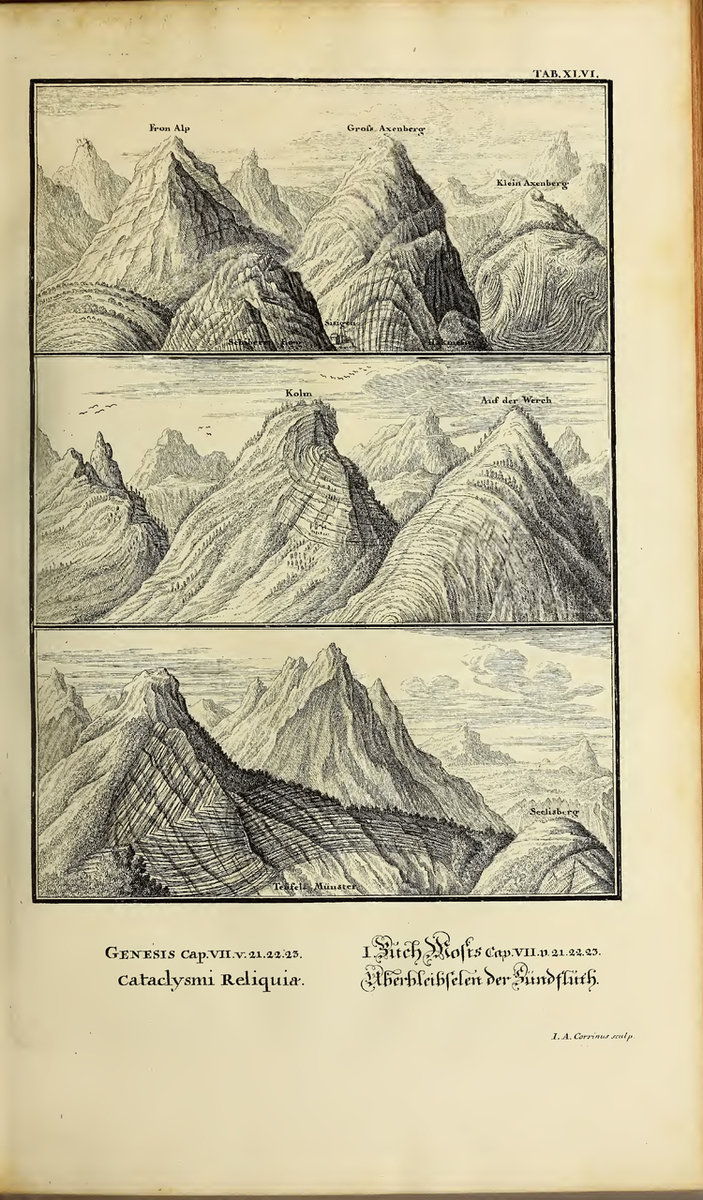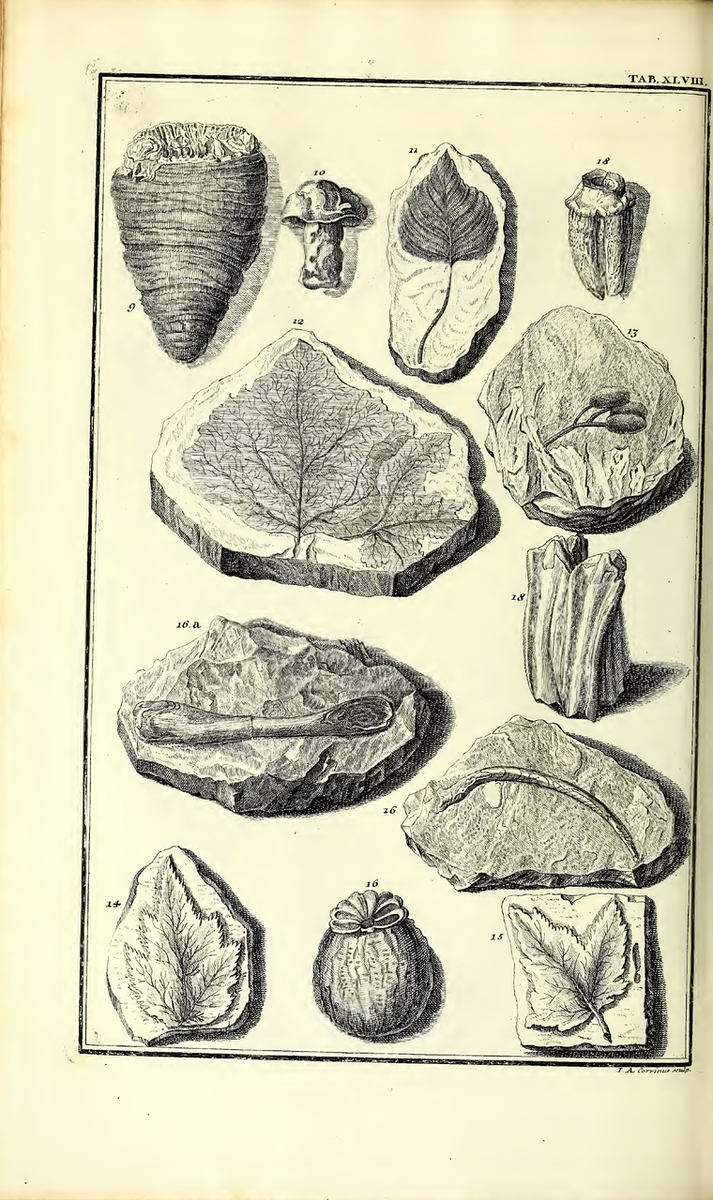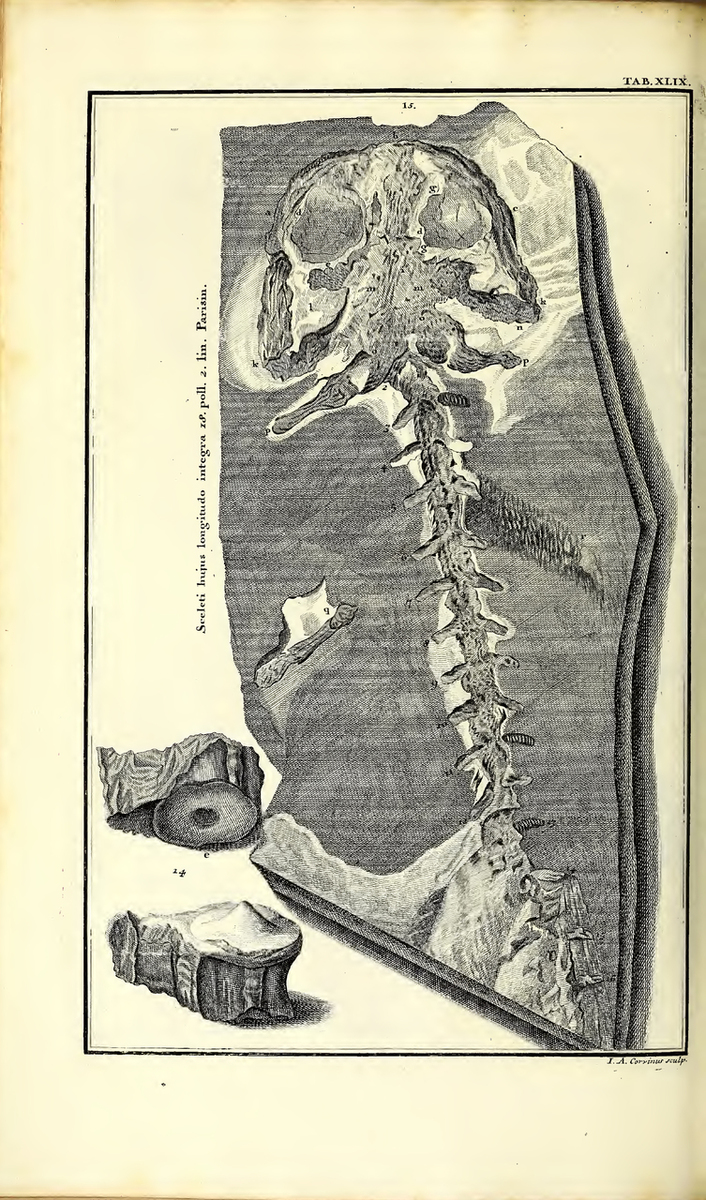Johann Jacob Scheuchzer, Copper Bible (1731)
Abstract
In his Copper Bible, the Swiss physician and natural scientist Johann Jakob Scheuchzer (1672-1733) explained natural phenomena with the help of biblical narratives. Copperplate engravings no. 45-49 feature mountains and rock faces from the Swiss Alps, as well as plant and animal fossils. Scheuchzer interpreted the fossil skeleton in plate no. 49 (XLIX) as the remains of a man who had drowned in the biblical flood. Later, the French naturalist Georges Cuvier classified the fossil as an extinct giant salamander (Andrias scheuchzeri). Scheuchzer regarded his discoveries as empirical evidence of the biblical flood. As he understood it, mountains were submerged in the wake of the flood. When the water retreated, dead prehistoric animals, humans, and plants were left behind and eventually became fossilized in the mountains.
Source
Source: Genesis Cap. VII, v. 21, 22, 23. cataclysmi Reliquia/ I. Buch Mosis cap. VII, v. 21, 22, 23. Uberbleibselen der Sündfluth, Copper plates XLVI, XLVII, XLVIII, XLIX, in Johann Jacob Scheuchzer, Kupfer-Bibel, In welcher Die Physica Sacra, Oder Geheiligte Natur-Wissenschafft Derer In Heil. Schrifft vorkommenden Natürlichen Sachen, Deutlich erklärt und bewährt. Augsburg, Ulm, 1731. Available online at: https://archive.org/stream/physicasacra00sche#page/48/mode/2up
Further Reading
Robert Felfe, Naturgeschichte als kunstvolle Synthese: Physikotheologie und Bildpraxis bei Johann Jakob Scheuchzer. Berlin: Akad.-Verlag, 2003.
Irmgard Müsch, Geheiligte Naturwissenschaft: Die Kupfer-Bibel des Johann Jakob Scheuchzer. Göttingen: Vandenhoeck & Ruprecht, 2000.



